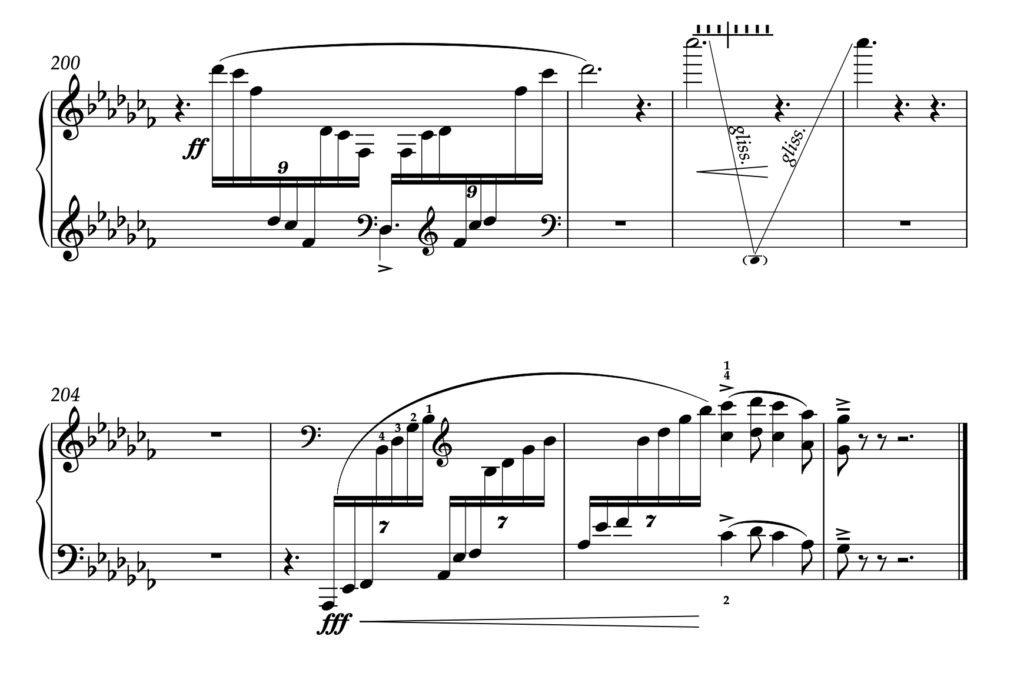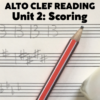(Tip no. 67 from “100 Orchestration Tips,” Part 4: Harp)
The range of the hands is not unlimited: the right hand cannot reach far below C in the bass staff, nor is it practical for the left hand to play complex lines around the very highest strings (due to visibility issues). This is also something that orchestration manuals barely touch on but is essential to know. If you’ve ever really watched a harpist do a full glissando, from the highest to lowest strings and back, you’ll see both hands move across the range of strings – with one hand or the other picking up the sweep as it enters the respective territory.
This also varies from player to player. A harpist with shorter arms is at a particular disadvantage when asked to use the wrong hand at extremes of the wrong register – and there are quite a few harpists of slighter build to consider. One can’t assume that every player will have longish arms, or that enough will be out there to accommodate two-handed tremolos below the bass staff, for instance (not that THAT would sound that great anyway, due to the string buzz I mentioned a few days ago).
The excerpt below from the very last bars of my harp concerto comprise a very good illustration of concerns of reach: in bar 200, the left hand reaches over to grab the lowest D in the center of the bar, even though it’s perfectly accessible by the right hand. Why? Because that low D will speak better as a single note from the left hand at that speed. Then in bar 201, there’s that full glissando I mentioned above – from highest Cb down to Db and back. Somewhere around middle C, the gliss will change hands. Then in the very last phrase at bar 206, the triple octave is divided so that the right hand gets two notes and the left only one. A harpist with a bigger reach might want to throw the middle note to the left hand – but with the average harpist, it’s safer to score it like this, especially at 126 beats per minute in 9/8 time. Besides, the arpeggio sets up the octave for the right hand better than the left.










